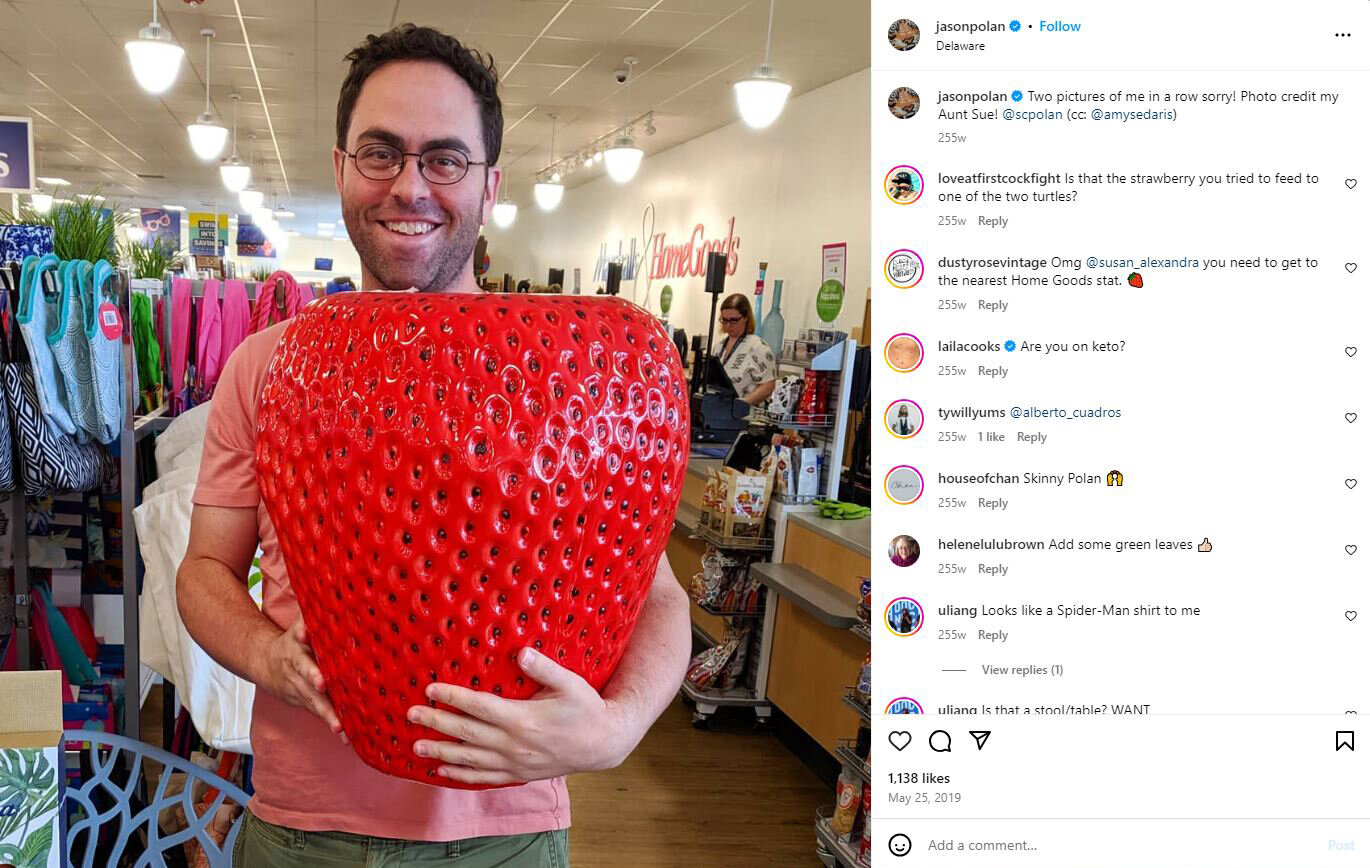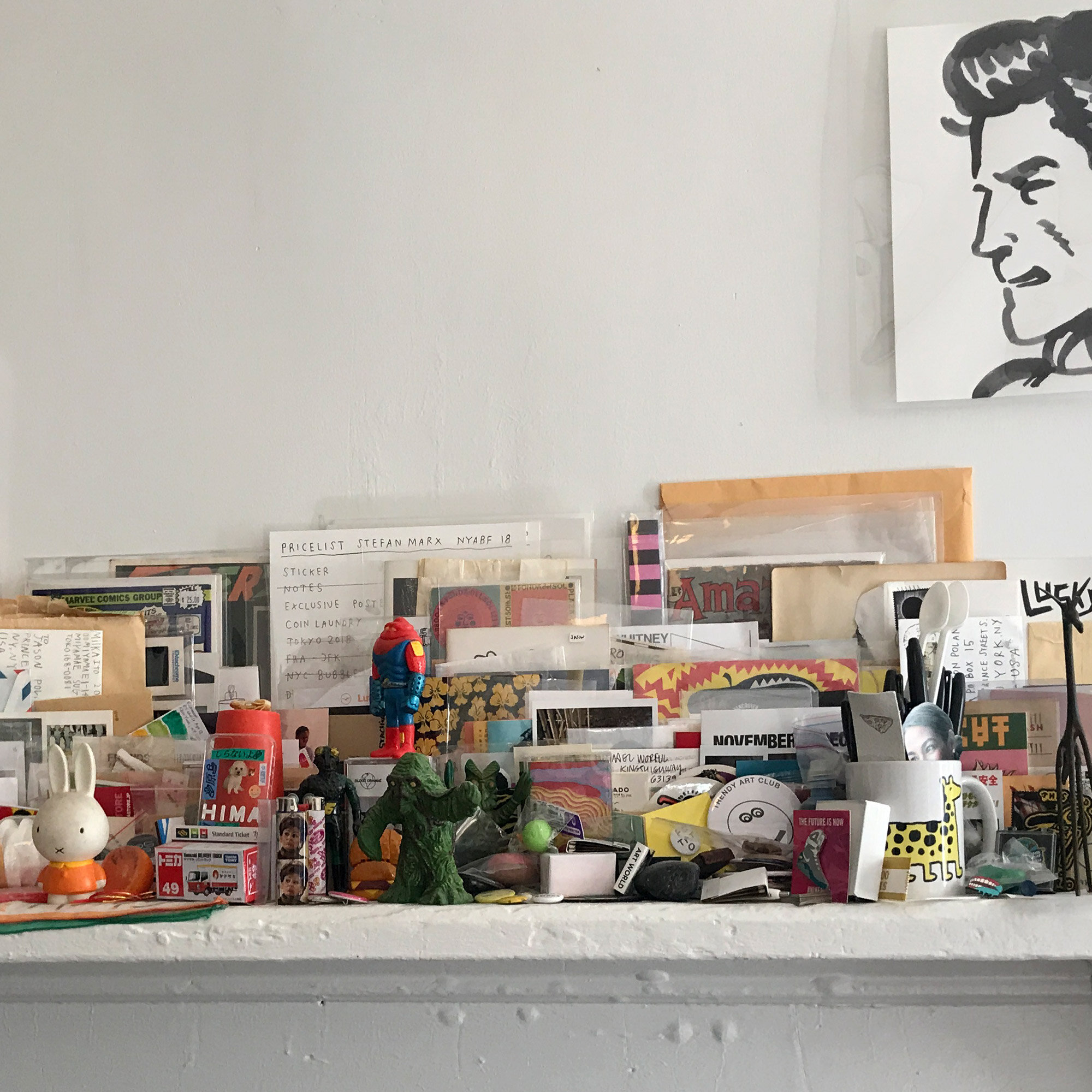214
214
ink on found object 17 h × 10¾ w × ¼ d in (43 × 27 × 1 cm)
estimate: $500–700
result: $1,260
follow artist
This work will ship from Lambertville, New Jersey.
As someone who circulated freely through the urban environment of New York City, Jason Polan’s work as an artist was intimately connected to experiencing all that the metropolis had to offer—and fondly, sometimes obsessively, cataloging its ceaseless variety. Polan moved to New York in 2005 and passed away at the start of 2020. Because his time there spanned the post-9/11 to pre-COVID era, he absorbed the city during the slow reconstruction of lower Manhattan, amid the shock of the Great Recession of 2008, and prior to the dramatic shutdown brought on by the global pandemic.

Both ambition and optimism are inherent in Polan’s embrace of New York's sprawling physical terrain and masses of people, who are without fail rendered as distinct individuals by Polan’s hand. Above all, his artistic project suggests freedom of movement and proximity to others, along with the importance of noticing and carefully documenting, while evoking in retrospect our shared loss of spatial innocence.
“[Jason] died before the pandemic,” Sadie Stein noted in her opinion piece for The New York Times in early 2021, “when most of us still had yet to learn that those occasional breaks from urban anonymity, those small moments of connection—wordless, spoken, odd, quotidian—are a tremendous luxury.”
Apart from regularly sharing a table with friend and artist Stefan Marx at Printed Matter’s annual New York Art Book Fair in recent years, Polan did not exhibit widely or have his work shown by major galleries. Among the exceptions were his first-ever solo show, Living and Working, at Chelsea's Nicholas Robinson Gallery in 2011 and an exhibition featuring some of his works at the Parisian retail boutique Colette in 2013. Nevertheless, Polan’s prolific nature and egalitarian approach made him both a well-known and beloved artist, someone who imbued rare warmth and humanity into his art and everyday interactions, which were ultimately inextricable from each other.


Robert Loughlin 1949–2011
Robert Loughlin was a beloved artist and character in the world of design. Born in Alameda, California in 1949, his interest in design flourished at a young age. By the late 1970s, he had opened two stores in San Francisco, being one of the first "pickers" to specialize and create a resale market for mid-century design. In 1980, he relocated to Miami Beach, Florida where he established a third store and also began painting.
After several years, he moved to New York City and opened the Executive Gallery and became immersed in the downtown art scene. He became known for his boisterous, hard-living as much as his design skills; he sourced art and furniture for clients such as Andy Warhol, Jean-Michel Basquiat and Robert Mapplethorpe. One of his most impressive finds was a Salvador Dali painting at a thrift shop that he bought for $40. During this time, his iconic imagery of "The Brute," a smoking square-jawed male figure, began appearing all over the city — on found objects including doors, tables, antiques, trash, bottles, skateboards, other works of art, and public spaces alike. "The Brute," an idealized male face, often depicted smoking, recalls the classic, masculine faces of James Dean and Marlon Brando, and is modeled after Loughlin's partner of thirty-one years, Gary Carlson. Loughlin explored the far reaches of this singular imagery, which has since become an icon of gay and outsider culture.
His artworks are collected by institutions such as The Carnegie Museum of Art and among personal collections including the artist Donald Baechler. Tragically, Robert Loughlin was struck by a car near his home in New Jersey in 2011.
Auction Results Robert Loughlin